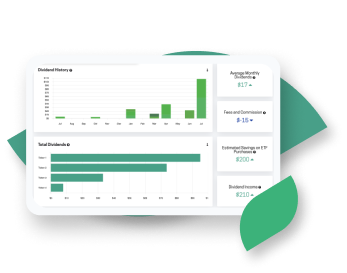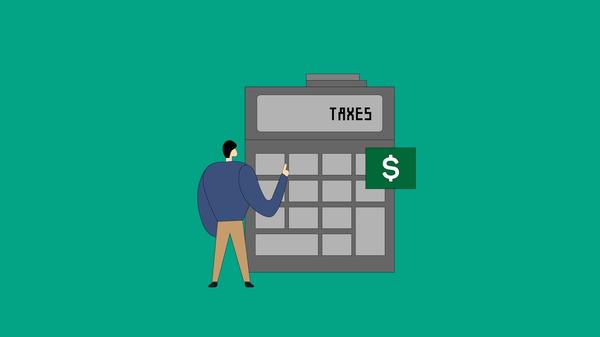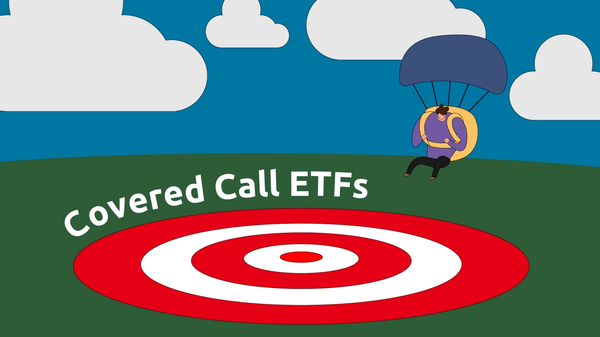For the independent investor, dividends can be a safe port in a storm. Reliably churning out investment returns they are the bedrock of many retirement portfolios.
Canadian banks are just one example of the security of dividend-paying stock. Since its beginning in 1817 BMO has only twice failed to return a dividend - and both of those years were in the early nineteenth century.
What is Dividend Reinvestment?
Dividends offer a choice for investors. Take the cash to use as income or re-invest those dividends in more assets.
One key note is the similarities and differences between dividend Exchange Traded funds and dividend stock.
Like the basis for the ETF generally, dividend ETFs are driven by a basket of the underlying dividend stocks. While the dividend ETF will ride the market wave just like stocks, they should be less volatile than individual dividend stocks. Ultimately, they act much the same, paying out dividends on a schedule that you can then reinvest into the ETF or stock.
Selling either of these kinds of investments for income when the market is under pressure and volatile can detract from long-term investment success. For Passiv investors the convenience factor of reinvesting dividends is a great selling point in a long-term financial plan.
What Are the Benefits of Reinvesting Dividends?
A dividend is a reward that a company or fund returns to its shareholders on a per-share basis.
- The more shares you own, the larger the dividend payment you receive.
- Investors can take the money as profit or reinvest the dividends to buy more shares of the company or fund
- With dividend reinvestment, you are buying more shares with your dividend, rather than pocketing the money
- If the shares or funds are held within an RRSP or an IRA they will be protected from taxation until the plans are liquidated down the road
I's important to remember a key benefits of a Dividend Reinvestment Plan (or DRIP) is that your investment can grow faster than if you pocket your dividends and rely solely on capital gains to generate wealth.
What is DRIP?
A Dividend Reinvestment Plan takes dividends and automatically reinvests in more ETFs or stocks. This is the power of a compounding strategy for investment returns. Once the plan is set up through your brokerage accounts, like Questrade, the process is automatic - you won’t owe commissions or other brokerage fees when you buy more shares.
The way it works is the DRIP buys you additional shares on a regular basis when you get a dividend. A DRIP is also a flexible way to invest. Though most brokers won’t let you buy fractional shares, you can with dividend reinvestment programs. This is dollar-cost averaging (DCA) in action.
However, there is a way to create your own user directed DRIP with Passiv. More on that later.
Cash vs. Reinvested Dividends Example of Reinvestment Growth
Taking your dividends in cash, or cash dividends, isn't as simple as just taking the money and run.
We should first understand the basic math of reinvesting your dividends.
Assume the following:
Dividend: 40 cents
Stock Price: 7% increase annual
Dividend Yield: 2%
Initial investment: $20,000
Initial Shares: 1,000
In the graph, the bars represent your total value, separated to show the dividend earned in grey (what you pocketed) and the portfolio value in purple (what remains invested).
The green line is the total portfolio value, with the dividends included in the total portfolio value because they have been reinvested.
Look at that reinvesting line climb.
If we compare, you can see the short term returns may not be that substantial - after five years, your portfolio value will have increased by only $458.26 more by reinvesting your dividends (and it would be tied up in the value of your shares). But after 20 years, you're total value is $20,063.19 larger if you had been reinvesting.
Here's another way reinvesting makes things get crazy - how quickly your original investment will grow. If you reinvest, your portfolio value will:
- Double in 3 fewer years (Year 8)
- Triple in 4 fewer years (by Year 13)
- Quadruple in 5 fewer years (by Year 19)
Another way to look at it is this: after 20 years, you're dividend yield will be $707.09 more with each dividend than if you cashed out.
Whichever way you cut it, you're total return is going to be superior.
Are Reinvested Dividends Taxable
You should know that firstly, this depends where you live.
In Canada, for example, dividends are federally and provincially taxed. The tax component of qualified dividends is currently taxed at 15.0198 percent, while the tax portion of non-eligible dividends is taxed at 9.031%.
Ordinary Dividends vs Qualified Dividends
Like any investing gain, cashing out your dividends has tax consequences regardless of what you do with the money.
Dividends are taxable income even if they are put back into the same stock or fund. It is no different than having received them in cash - so your dividend is treated as either qualified or ordinary (also called unqualified dividends). As a shareholder receives a dividend, you must include it in your tax return.
- Qualified dividends are taxed at a lower rate as a capital gains tax
- Ordinary dividends are taxed at a higher tax rate like ordinary income
That means that even if you plan to reinvest those dividends, the taxable dividends answer is: yes.
DRIP Tax
Then there is taxation in a DRIP, which may only apply taxes on the difference between the shares' fair market price and the purchase price. Because the purchase price is normally below market value, this amount is taxed as ordinary income.
Stock Dividend
However, depending on the company issuing the dividend, you may not be taxed until you sell the shares - this is because some companies won’t provide cash dividends but issue you shares of stock, which are taxed once they are sold.
Therefore, a tactic to minimize Dividend Reinvestment Taxes in this regard is by waiting till your taxable income comes off its peak earning years and your taxes are calculated at a lower threshold. Taking your dividend profits at that point will reduce the amount of tax you pay relative to your top earning year.
Reasons Not To Reinvest Dividends
Let's first examine a key arguments against why some would recommend you don't reinvest your dividends.
Argument: Some advisors say the benefits of dividend reinvestment don't outweigh if the underlying stock isn’t performing well.
Counterargument: remember, one of their main benefits is that dividend payouts occur regardless of the stock’s recent price movement. This indicates that the company paying them has an established track record of earning profits – a clear sign that the company is fundamentally worth investing in.
So even if the share price is in a slump or there is a market downturn, odds are it will recover eventually. If you’re going to hold onto the stock anyway, and therefore keep receiving dividends, why not keep getting the extra boost from reinvesting them?
There are, of course, valid reasons not to reinvest. You should be aware of a few things, such as:
- Reinvesting dividends can concentrate your portfolio in one position. By reinvesting dividends, you will increase your position in the company paying them. If that company represents five percent or more of your portfolio, it may be wise to avoid getting too concentrated and not reinvest in more dividends of that asset.
- In many cases, it’s also a good idea to make your investments less aggressive over time. If you’ve been reinvesting dividends, diverting that cash toward less aggressive assets (like bonds) can be a good way to reduce risk.
- Money is ultimately for spending, and sometimes you just need the cash. There’s nothing wrong with taking cash dividends, especially if you’re looking at or approaching retirement and long-term growth is less of a priority than short-term, retirement income.
- Maybe you just don’t want to invest in dividend stocks in the first place. After all, a dividend is technically removed from the share price - so when you invest in assets that don’t pay a dividend, you are still benefiting from the increased value, it’s just built into the price.
Want to know what is interesting about all of these reasons not to invest? Passiv can solve them!
How Does Passiv Give Me More Control Reinvesting My Dividends
Passiv’s self-balancing solution is ideal for growing your wealth by automating for consistent re-investing. This can be used for, in essence, automatic dividend reinvestment.
This is the kicker: Passiv allows you the power to control where you reinvest your dividends.
You'll notice that using a DRIP allows you to only reinvest in the same company that issued the dividend - which runs the risk of concentrating too much of you in one asset, resulting in a change to your allocation.
With Passiv, you take your dividends and reallocate it anywhere you want in your portfolio, according to your desired allocation. You can take dividends from one asset and reinvest them into another company that issues dividends. You can use the dividends to buy underweight assets to keep your fixed income position strong. It's really up to you.
The process is simple:
- Set up your portfolio and allocation targets, which would include how much of your total portfolio you want to allocate to all your dividend assets.
- Set your Cash Notification settings for how Passiv sends you a notice when new dividends hits your account
- Set Your Cash Management Rules to re-invest only the amount of your choosing. Use Cash Management rules like ‘Allocate At Most’ and ‘Retain At Least’ to allocate new cash gradually or withhold a specific amount of cash for some future purpose.
- Receive A Notification when new cash hits your account, Passiv sends you a notification to take action.
- Review Your Trade Recommendations that Passiv calculates based on how much of each asset you need to buy to reinvest your dividends
- Make Your Trades In One Click with the recommended trades previewed for you, you can then execute all of these trades in a one single click.
Following this process creates a User Driven DRIP - free from the higher fees you may pay to a mutual fund or a brokerage DRIP and, as important , allows you to take action immediately.

Create Your Dividend Reinvestment Plan
Be in control of your own dividend reinvesting. Sign up for Passiv to automate your dividend re-investing to save you time and fees.
Get Started

